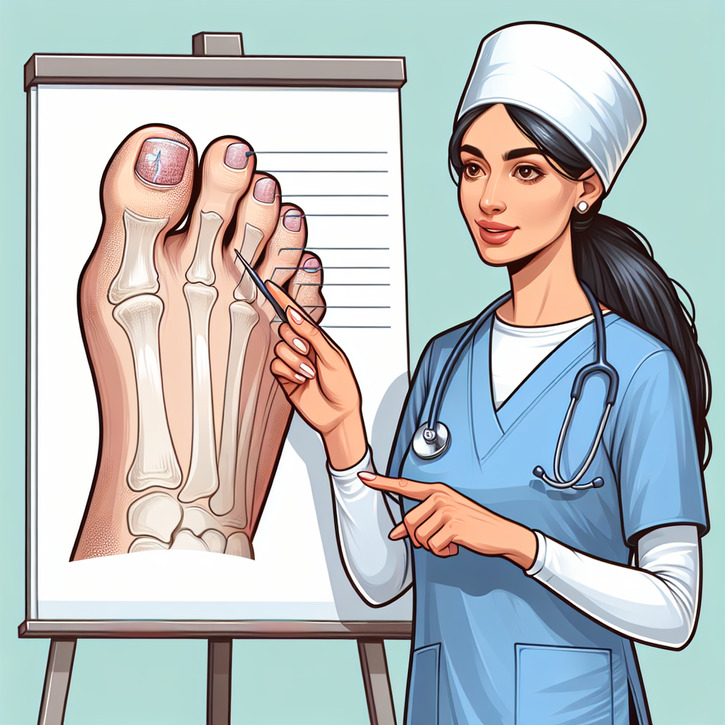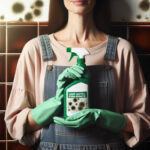Onychomycosis and You: How to Recognize, Treat, and Prevent Nail Fungal Infections

Getting to Know Onychomycosis: That Pesky Nail Fungus
Ever notice your nails turning a bit off-color or getting brittle and odd-shaped? Chances are you might be dealing with onychomycosis, a fungal infection that can really throw your nail game out of whack. This condition happens when fungi like dermatophytes, yeasts, or even non-dermatophyte molds sneak into the nail bed or plate. While it’s not life-threatening, it can definitely cause discomfort, pain, and give your confidence a run for its money. The spread is usually slow, but if left unchecked, things tend to spiral. Fun fact: “onychomycosis” comes from the Greek words for nail (onycho) and fungal infection (mycosis), which might help clear up some of the mystery around it. Recognizing it early is key—both for looking after your nails and your overall well-being.
Within the whole world of skin and nail care, onychomycosis really stands out as a common and troublesome issue. It’s often confused with other nail problems, but at its heart, it’s a fight against a fungal intruder. In this article, we dive into the nitty-gritty of who might be at risk and bust some myths that seem to float around. We’re bringing you insights backed by expert advice and the latest research so you’re well-equipped to spot, treat, and even prevent this stubborn nail trouble.
One of the major challenges with onychomycosis is that its consequences aren’t just skin-deep. A lot of folks mistakenly brush off a fungal nail infection as merely a cosmetic nuisance, when in reality, it can seriously affect how your nails function and even lead to discomfort or pain. Many assume it’s an issue only for older adults, yet younger people can fall prey too under the right conditions. Our goal here is to set the record straight, shaking off those old myths and advocating for early, proactive measures. Knowledge is power when it comes to keeping those nails healthy!
Spotting the Signs: What onychomycosis Might Look Like
Catching onychomycosis early can save you a lot of hassle down the road. At first, you might just notice a faint change in your nails—a yellowish tinge or some white spots, for example. These subtle hints can easily be overlooked, but they’re your body’s way of waving a little red flag. Paying attention to changes like nail thickening or becoming more brittle might just be the wake-up call you need to consult a professional before things get out of hand.
As the fungus gains ground, the changes in your nails become much more obvious. You might see nails turning ragged or crumbly, and in some cases, they could even start loosening up from the nail bed. This can sometimes lead to nail dystrophy, where the nail's shape, thickness, and consistency go off the rails. While these signs can be pretty alarming, they're a good reminder that it’s time to take a closer look and consult with a healthcare provider. Sometimes, conditions like psoriasis or even past nail trauma can mimic these symptoms, so getting a clear diagnosis is definitely the way to go.
That’s where the process of differential diagnosis becomes a lifesaver. By comparing symptoms across various conditions, your healthcare provider can rule out other nail disorders and make sure you’re dealing with onychomycosis. With ongoing advances in testing methods, accurately pinning down the culprit has become much easier. So if your nails are giving you a hard time, it’s a smart move to get them checked out.
Pinpointing Onychomycosis: Diagnosing with the Right Tools
Usually, the first step in diagnosing onychomycosis is a good old-fashioned visual check. Your doctor will examine your nails for any unusual discoloration, thickening, or warped shapes that might scream fungal invasion. Combined with your medical history—think diabetes or a weakened immune system—the picture can start to come together. This initial check sets the stage for deciding if further lab tests are needed.
When it comes to lab work, several tests come into play to nail down (pun intended!) the diagnosis. You might hear about techniques like potassium hydroxide (KOH) prep, fungal cultures, and even some cutting-edge molecular methods. These tests are all about zeroing in on the specific type of fungus causing the mischief, which then helps shape the best treatment plan. For example, knowing whether you're dealing with a dermatophyte or a yeast can determine whether topical or oral treatments are the way to go. It’s all about using the right evidence-based approach to get your nails back in shape.
Tackling Onychomycosis: Exploring Treatment Options
Once your diagnosis is in the bag, you’ve got a few treatment roads to choose from. For milder cases, topical medications—like nail lacquers and creams—often serve as a first line of defense. These treatments target the fungus directly where it’s causing trouble, though they might be a bit of a long-haul commitment. On the upside, they’re non-invasive and usually pretty gentle on the system.
If your nail infection is putting up a tougher fight, oral antifungal medications, such as terbinafine or itraconazole, might be recommended. These drugs work systemically, reaching deep into the nail bed to clear the fungus out completely. They do require careful use over several weeks or even months, and it’s essential to chat with your doctor about any potential side effects. When paired with good nail care, these treatments can be remarkably effective.
And let’s not forget—research is always on the move! Newer treatments like laser therapy, photodynamic therapy, and even some natural remedies have been popping up as promising alternatives. Laser treatments, for instance, heat up the nail area to zap the fungus without a long-term drug regimen. Although these methods are still getting a full thumbs-up from the research world, many people are already reporting success, hinting that the future of onychomycosis treatment might be a lot more diverse.
Keeping Fungus at Bay: Tips and Tricks for Prevention
They say prevention is better than cure, and that’s especially true when it comes to onychomycosis. Keeping your nails in top shape—clean, dry, and trimmed—can go a long way in stopping fungal invaders before they even get a foothold. Simple daily habits, like switching out sweaty socks and shoes after a workout or a day out, can make a huge difference. Fungi love damp, warm places, so controlling moisture is your secret weapon.
Your environment also plays a big part in preventing nail infections. Places like swimming pools, locker rooms, and communal showers can be hotspots for fungal spores, so rocking a pair of flip-flops in those areas can save you a headache down the road. And if you have health conditions like diabetes or a compromised immune system, extra care is definitely in order. Small lifestyle tweaks—like opting for breathable footwear and avoiding prolonged moisture exposure—can build a strong defense against onychomycosis.
Busting Myths About Onychomycosis
There’s a fair share of misconceptions floating around about nail fungal infections. One of the biggest myths is that these infections are just a normal, untreatable part of aging, leading many to shrug off early signs. But here’s the deal: onychomycosis is highly treatable if you catch it early and take action. Let’s get those myths debunked so you know exactly what you’re dealing with.
Many people mistakenly see the infection as only a cosmetic problem, but untreated onychomycosis can lead to more serious issues—like secondary bacterial infections or even persistent discomfort. And while it’s easy to assume that only older adults are at risk, younger individuals are not immune to these fungal foes. Clearing up these misunderstandings is crucial in encouraging everyone to pay attention to nail health and seek proper care when needed.
Knowing When to Call in the Pros
So, when should you actually worry about your nails? If you’re noticing rapid deterioration, ongoing pain, or if the changes in your nails start to disrupt your daily routine, it’s high time to get medical advice. You might see nail thickening, deformation, or even a nail that seems to be peeling away from the bed. Those aren’t just cosmetic issues—they could be signs of a deeper problem that needs attention before things escalate further.
A visit to your healthcare provider can offer you both a clear diagnosis and a tailored treatment plan. Beyond the initial check-up, your doctor might run additional tests to rule out other conditions that mimic a fungal infection. This kind of professional evaluation bridges the gap between self-care and expert intervention, ensuring you get the most effective treatment for your situation.






